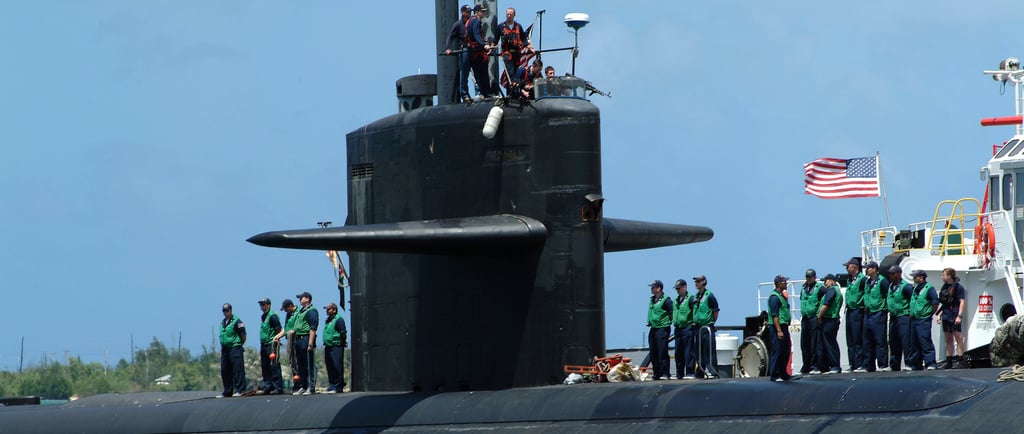Submarines: Silent Hunters Beneath the Waves
Beneath the ocean’s surface, unseen and unheard, submarines prowl the depths, serving as some of the most formidable assets in naval warfare. These stealthy vessels are essential to modern military operations, providing reconnaissance, strategic deterrence, and direct attack capabilities. From their early origins to their role in today’s navies, submarines have shaped the course of maritime history and continue to be a dominant force in global security.


The Evolution of Submarines
The idea of underwater warfare dates back centuries, but the first operational military submarine, the Turtle, was developed during the American Revolution. This hand-cranked, single-person craft attempted—unsuccessfully—to attach explosives to British ships. While it wasn’t effective in combat, it paved the way for future advancements.
During the Civil War, the Confederate submarine H.L. Hunley became the first submarine to sink an enemy warship, proving that undersea combat was viable. However, it wasn’t until World War I and World War II that submarines emerged as critical naval assets, with German U-boats inflicting devastating losses on Allied shipping.
The post-war era saw rapid advancements, including the nuclear-powered submarine, introduced with the USS Nautilus (SSN-571) in 1955. This revolutionized submarine warfare by allowing for prolonged underwater operations, unlimited by the need to surface for air.
Types of Modern Submarines
Today’s submarines are divided into several categories, each designed for specific missions:
Attack Submarines (SSNs) – These fast, agile submarines specialize in hunting enemy ships and submarines. The U.S. Navy’s Virginia-class and Los Angeles-class submarines fall into this category.
Ballistic Missile Submarines (SSBNs) – Often referred to as “boomers,” these subs carry nuclear missiles, serving as the underwater leg of a nation’s nuclear deterrent. The Ohio-class submarines patrol silently, ready to launch devastating counterstrikes if necessary.
Guided Missile Submarines (SSGNs) – Originally designed for nuclear deterrence, some Ohio-class submarines were converted into SSGNs, capable of launching Tomahawk cruise missiles and deploying special operations forces.
Diesel-Electric Submarines (SSKs) – Though less common in the U.S. Navy, many countries operate these cost-effective, stealthy submarines for coastal defense and reconnaissance missions.
The Power of Stealth and Advanced Technology
Modern submarines rely on extreme stealth, using advanced technology to evade detection. Their anechoic coatings, quiet propulsion systems, and advanced sonar suites make them nearly invisible to enemy forces.
Some of the most impressive features of modern submarines include:
Nuclear Propulsion – Allows submarines to stay submerged for months at a time, eliminating the need to surface for air.
Sonar and Acoustic Warfare – Submarines use passive and active sonar to detect and track enemy vessels while remaining undetected themselves.
Ballistic Missile Capabilities – A single SSBN carries enough nuclear firepower to deter entire nations, making submarines a cornerstone of global security.
Special Operations Support – Many submarines deploy Navy SEALs and other special forces for clandestine missions.
Life Aboard a Submarine
Life on a submarine is unlike any other military experience. The cramped quarters, lack of daylight, and extended patrols make it one of the most mentally and physically demanding assignments in the military. Crew members must function as a highly disciplined team, maintaining the submarine’s complex systems and responding to emergencies in complete isolation from the outside world.
Despite the challenges, submariners take pride in their elite status, knowing they serve as the silent sentinels of the deep, ready to strike at a moment’s notice.
The Future of Submarine Warfare
As technology advances, submarines are becoming even more advanced and lethal. The U.S. Navy’s Columbia-class ballistic missile submarines, set to replace the aging Ohio-class, will feature next-generation stealth and survivability enhancements.
Meanwhile, unmanned underwater vehicles (UUVs) are emerging as a new frontier in naval warfare. These autonomous submarines can conduct reconnaissance, lay mines, and even attack enemy vessels—all without putting human lives at risk.
Conclusion
Submarines are the ultimate force multipliers, capable of launching nuclear missiles, hunting enemy fleets, and deploying special operations forces—all while remaining undetected. Their stealth, endurance, and firepower make them one of the most formidable weapons in any nation’s arsenal.
From the deadly U-boats of World War II to the nuclear-powered behemoths of today, submarines have played a crucial role in shaping naval warfare. As technology continues to evolve, these silent hunters will remain a dominant force beneath the waves for decades to come.